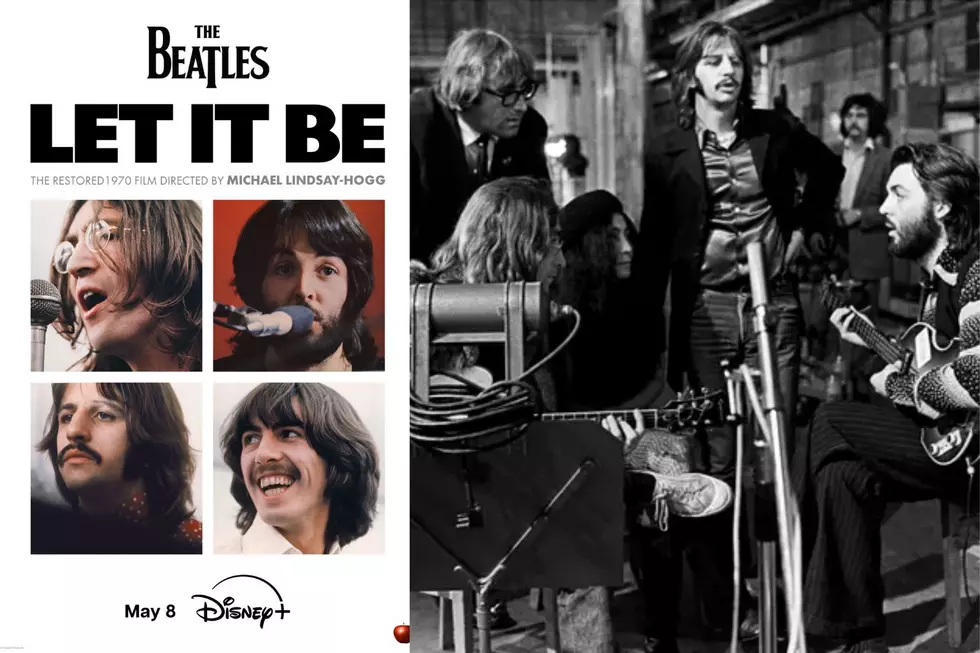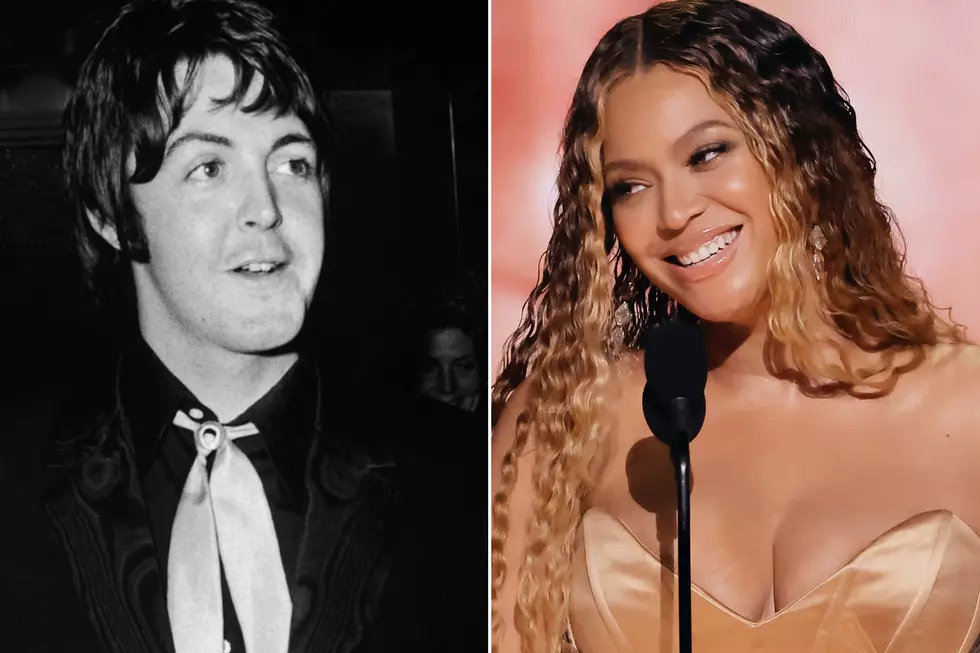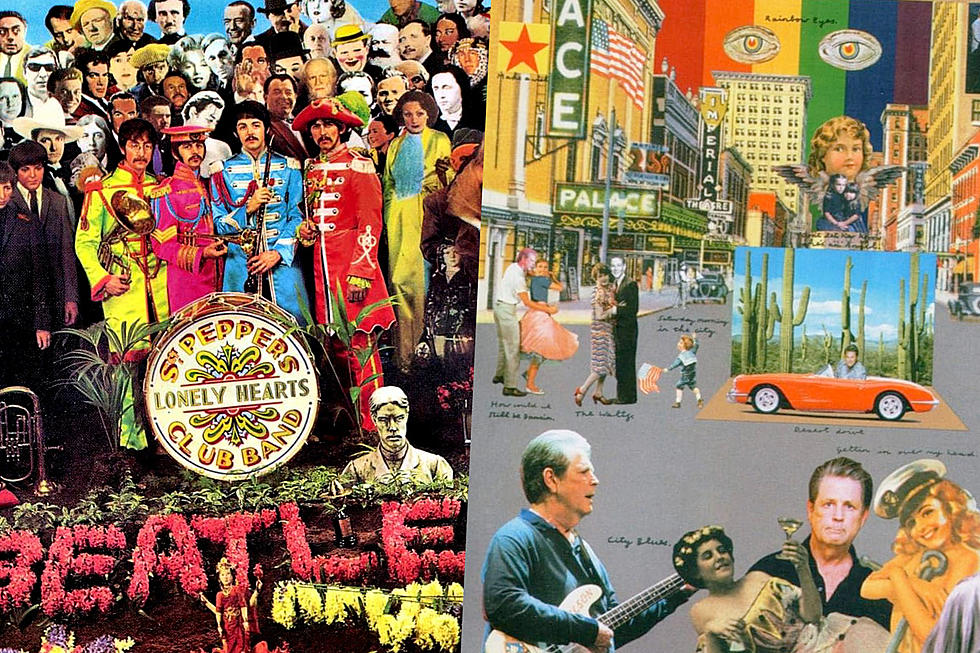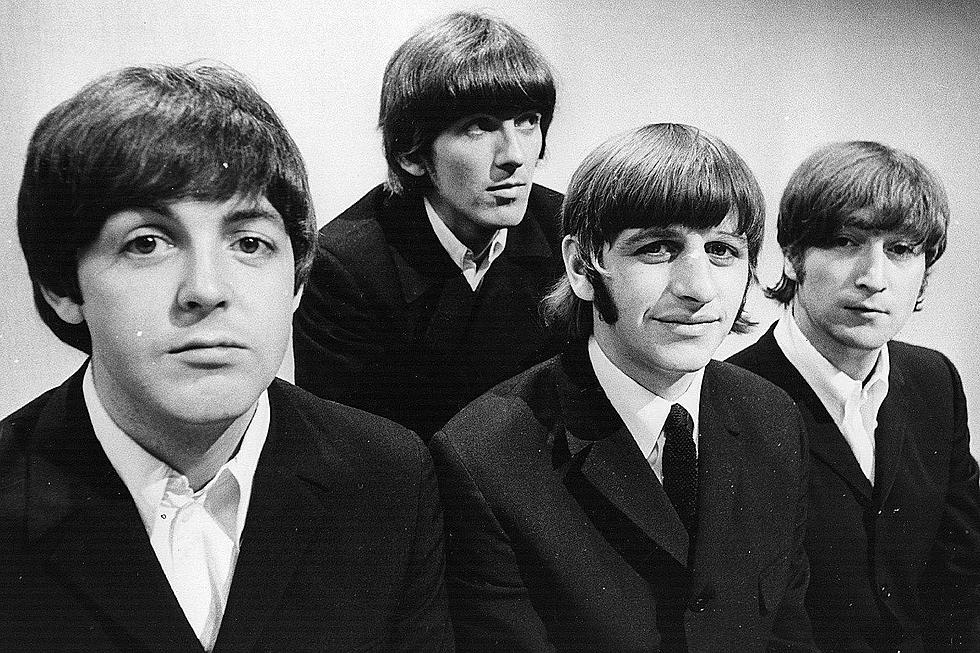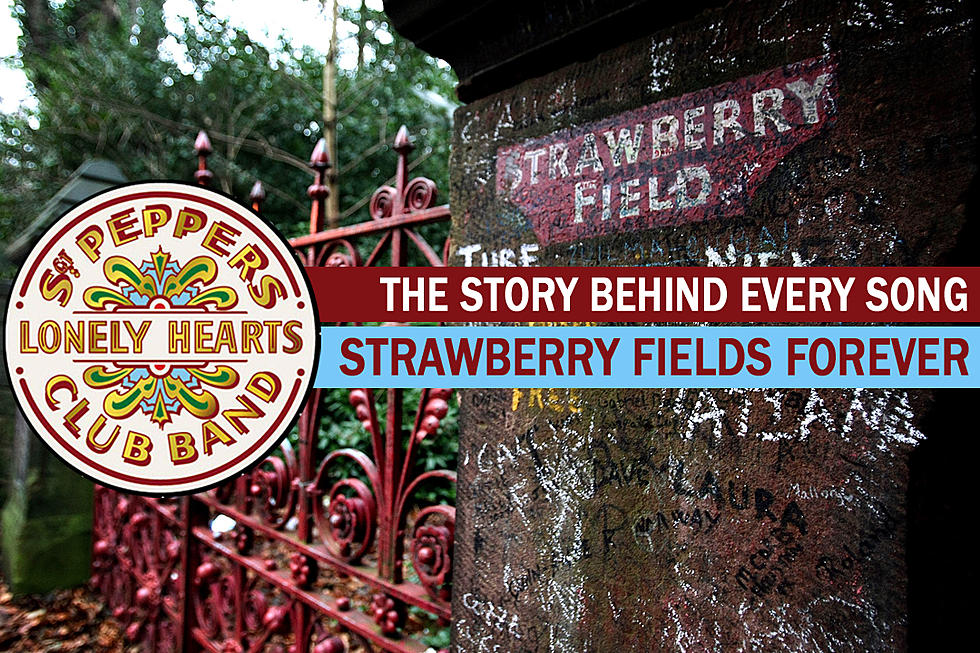
The Beatles Start Sessions for a Masterpiece With ‘Strawberry Fields Forever': The Story Behind Every ‘Sgt. Pepper’ Song
The Beatles began the recording of their masterpiece with a song that didn't end up on it.
On Nov. 24, 1966, the group entered the EMI Studios on Abbey Road in London with producer George Martin to start work on the follow-up LP to that year's revolutionary Revolver. Five weeks and 45 hours later they completed "Strawberry Fields Forever," a song earmarked for Sgt. Pepper's Lonely Hearts Club Band, but after its release as a single on Feb 13, 1967, was pulled from the LP's final track listing.
Over the course of the sessions, the song took several detours from John Lennon's stripped-down acoustic take, when it was called "It's Not Too Bad," to the four-minute, studio-embellished and -enhanced finished track, one of the Beatles' greatest achievements. The Sgt. Pepper sessions got only more ambitious after that.
The seeds of "Strawberry Fields Forever" started with Revolver, or maybe even before that, depending on how you chart the Beatles' evolution. But for most historians and fans, their 1966 album was the major turning point. They topped themselves and transcended pop music on Revolver, but Sgt. Pepper was going to be something else. Something bigger, grander and even more ambitious in its scope.
So "Strawberry Fields Forever" was crafted as the first shot of this industrious new project. Lennon began writing the song while filming How I Won the War in Spain in September. Two months later he recorded it as a solo demo (a 1:42 sequence of three distinct versions can be heard on the Anthology 2 set). Lyrically, it was based on a children's home called Strawberry Field that was near Lennon's childhood house in Liverpool – although he took a surrealistic route to this nostalgic place. Musically, it was something else altogether.
Listen to the Beatles Perform 'Strawberry Fields Forever'
Then everyone else – including Paul McCartney (who added Mellotron, timpaini and more), George Harrison (who played an Indian harp, among other instruments) and Martin (who arranged the cello and trumpet sections) – got their hands on it. Over the next few weeks, the Beatles cut three different versions of the song, piecing the final track together from the work.
Over time, the song's distinctive signposts came to life: the tape manipulation that resulted in Lennon's slurred and slowed-down vocals; the horns and strings that push along the later verses; and the discordant finale that emerges after the song first fades out. (Not to mention Lennon's off-the-cuff uttering of "cranberry sauce" at the end, which Paul-Is-Dead theorists misheard as "I buried Paul.")
In a way, "Strawberry Fields Forever" sounded like nothing else in the Beatles' catalog at the time, not even from the groundbreaking Revolver. The tape loops, the backward instruments, the fact that the song was stitched together like a Frankenstein monster from various parts – no wonder Lennon thought it was his greatest moment with the Beatles. Its influence over the years is immeasurable. The promotional film they made for it was equally significant, giving birth to the conceptual music video.
The group's record company was so eager to get a new single out there, they were coerced to release "Strawberry Fields Forever," along with another new song designed for Sgt. Pepper, McCartney's also-nostalgic "Penny Lane," as a double A-side, despite the original plan for a prime spot on the upcoming LP. Martin later said the decision was a "dreadful mistake." And he does have a point. Both songs fit effortlessly into the album's conceptual and musical foundation.
"Strawberry Fields" stalled at No. 2 on the U.K. chart, marking the first time a Beatles single didn't reach No. 1 since "Please Please Me" back at the start of 1963. In the U.S., "Strawberry Fields Forever" climbed to No. 8, while "Penny Lane" made it all the way to the top. Both tracks eventually ended up on the U.S. Magical Mystery Tour album that came out in November 1967, five months after Sgt. Pepper's Lonely Hearts Club Band changed the course of popular music.
Beatles’ ‘Sgt. Pepper’s’ Cover Art: A Guide to Who’s Who
Foreigner, Styx and Don Felder Share Beatles Memories
More From Ultimate Classic Rock
